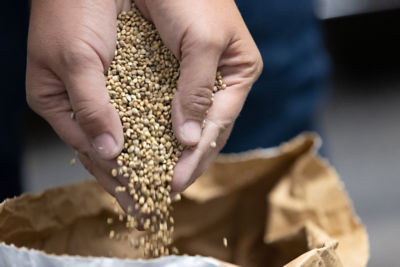Causal Agent
Plectosporium tabacinum (synonym = Microdochium tabacinum)
Distribution
United States, Europe and Asia
Symptoms
Plectosporium tabacinum has a host range that includes cucurbits, peanut, snap bean, soybean and sunflower. It remains unclear whether these alternate hosts play a role in the epidemiology of Plectosporium blight of cucurbits, as it appears that some host specialization by isolates occurs. In the United States, pumpkin and squash are the most commonly affected cucurbit crops. Plectosporium tabacinum can infect all parts of the plant and often causes significant crop losses. Lesions on stems, leaf veins, petioles and peduncles are often sunken, spindle- or diamond-shaped and tan to white in appearance. Initially, stem lesions are small but can quickly enlarge and coalesce over the entire stem, turning it white. Leaf infections are confined to leaf veins and do not spread to interveinal leaf tissue. Infected petioles and peduncles can quickly turn dry and brittle, resulting in death of attached leaves or flowers. When a plant is severely infected, complete defoliation and plant death may occur. Infected fruit develop small, circular, tan to white raised lesions. Fruit lesions are usually constricted, but can expand to form a corky, necrotic panel. Fruit lesions often serve as entryways for secondary soft-rot organisms that cause various fruit rots.
 Foliar infection is confined to the veins. (Courtesy of Thomas A. Zitter)
Foliar infection is confined to the veins. (Courtesy of Thomas A. Zitter)
Conditions for Development
The disease cycle of Plectosporium tabacinum is not well understood. Disease outbreaks have been associated with high humidity and temperatures between 25–32°C (75–90°F). The pathogen has been reported to survive in crop residue in the soil for up to three years. Conidia can be splash-dispersed by rain and overhead irrigation or they can be carried by wind.
Control
Rotate out of cucurbits for three years. Increase air circulation within fields by reducing plant density, orient fields with prevailing winds, and avoid locations prone to high humidity. Implementation of drip irrigation along with a preventative fungicide spray program can help minimize or prevent outbreaks of Plectosporium blight.




